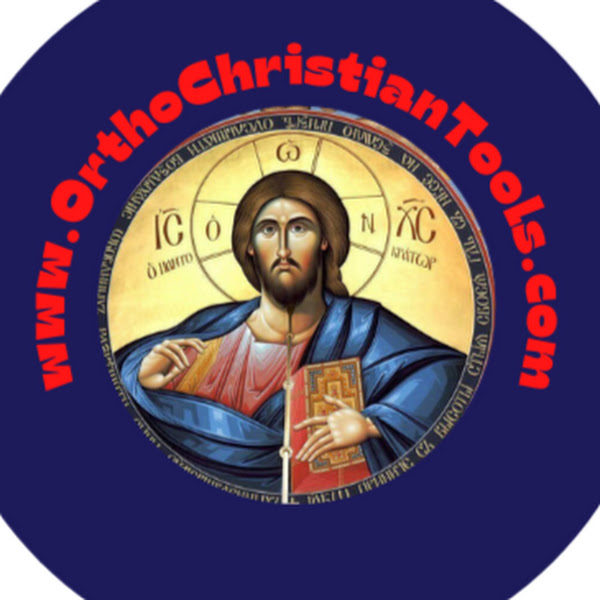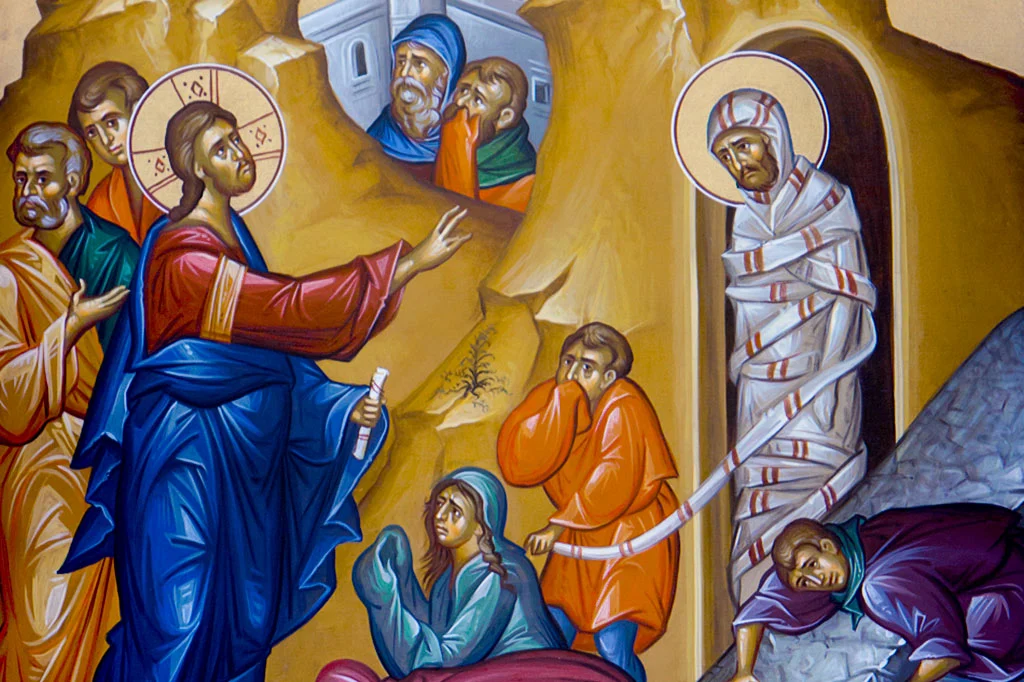The Miracle That Foretold the Resurrection
On the Saturday before Holy Week, the Orthodox Church celebrates one of its most profound feasts: the Raising of Lazarus. This extraordinary miracle—where Jesus brings His friend Lazarus back to life after four days in the tomb—serves as a powerful foreshadowing of Christ’s own Resurrection and the promise of eternal life for all believers.
As Great Lent draws to a close, this joyous feast bridges the penitential season with the coming Palm Sunday and the solemn journey of Holy Week. It reminds us that even in the face of death, Christ reigns as the Conqueror of Hades, offering hope to all who believe in Him.
The Biblical Account: A Story of Faith, Sorrow, and Divine Power
The story, found in John 11:1-45, begins with Lazarus falling ill. His sisters, Mary and Martha, send word to Jesus, pleading, “Lord, the one You love is sick.”
Jesus’ Deliberate Delay
Instead of rushing to heal Lazarus, Jesus waits two more days, telling His disciples:
“This sickness will not end in death. No, it is for God’s glory so that God’s Son may be glorified through it.” (John 11:4)
When He finally decides to go to Bethany, His disciples fear for His safety—Judea was dangerous, as Jewish leaders had already sought to stone Him (John 10:31). Yet Jesus responds cryptically:
“Are there not twelve hours of daylight? Whoever walks in the day does not stumble.” (John 11:9-10)
“Lazarus Is Dead”
Jesus then reveals the truth:
“Our friend Lazarus has fallen asleep, but I am going to wake him up.” (John 11:11)
The disciples misunderstand, thinking Lazarus is merely resting. So Jesus states plainly:
“Lazarus is dead.” (John 11:14)
Martha’s Faith and Jesus’ Declaration
Upon arriving in Bethany, Lazarus had already been in the tomb four days. Martha meets Jesus, expressing both grief and faith:
“Lord, if You had been here, my brother would not have died. But even now I know that whatever You ask of God, God will give You.” (John 11:21-22)
Jesus responds with one of the most powerful statements in Scripture:
“I am the Resurrection and the Life. The one who believes in Me will live, even though they die; and whoever lives by believing in Me will never die. Do you believe this?” (John 11:25-26)
Martha affirms her faith, declaring Him the Messiah, the Son of God.
Jesus Weeps—Then Acts
When Mary arrives, she falls at His feet in sorrow. Moved by her tears—and the grief of those around Him—Jesus Himself weeps (John 11:35).
Then, He commands the stone to be rolled away from the tomb. Martha, practical even in grief, warns:
“Lord, by this time there will be a stench, for he has been dead four days.” (John 11:39)
Jesus replies:
“Did I not tell you that if you believe, you will see the glory of God?” (John 11:40)
With a loud voice, He cries:
“Lazarus, come out!”
And miraculously, Lazarus emerges, still wrapped in burial cloths. Jesus orders:
“Unbind him, and let him go.” (John 11:44)
The Aftermath: Belief and Betrayal
Many who witnessed this miracle believed in Jesus. But others reported it to the Pharisees, accelerating their plot to kill Him (John 11:45-53).
This miracle was not just about Lazarus—it was a divine sign preparing the disciples (and us) for Christ’s own death and resurrection.
The Icon of Lazarus Saturday: A Visual Sermon
The icon of the feast vividly depicts the moment of resurrection:
Christ stands triumphantly, His hand raised in command.
Lazarus emerges from the tomb, still wrapped in grave clothes.
Mary and Martha bow before Jesus, their faces a mix of grief and awe.
Disciples and bystanders witness the miracle—some in faith, others in skepticism.
Jerusalem looms in the background, foreshadowing Christ’s coming Palm Sunday entry and eventual Crucifixion.
This icon reminds us that Christ is both fully God and fully man—He weeps for His friend, yet holds power over death itself.

How the Orthodox Church Celebrates Lazarus Saturday
This feast is marked by joyful services, including:
Vespers (Friday evening)
Matins & Divine Liturgy (Saturday morning)
Key Liturgical Elements:
Scripture Readings:
Hebrews 12:28–13:8 (calling us to grateful worship)
John 11:1-45 (the full Lazarus narrative)
Hymns of Victory:
The Apolytikion proclaims:
“By raising Lazarus from the dead before Your Passion, You confirmed the universal resurrection, O Christ God!”
The Kontakion exalts:
“Christ—the Joy, the Truth, and the Light of All—has appeared in His goodness, granting divine forgiveness to all.”
Baptismal Themes:
The hymn “As many as have been baptized into Christ have put on Christ” (Galatians 3:27) replaces the Trisagion, linking Lazarus’ resurrection to our own new life in Christ.
Why This Feast Matters Today
Lazarus Saturday is more than a historical remembrance—it’s a living testament to:
Christ’s Power Over Death – If He could raise a decaying body, He can resurrect us.
The Hope of Resurrection – This miracle foreshadows Pascha (Easter) and the final resurrection.
The Humanity & Divinity of Christ – He weeps with us, yet conquers death for us.
As we prepare for Holy Week, this feast fills us with hope: no tomb, no suffering, no death is beyond Christ’s redemption.
Final Thought: What Lazarus’ Resurrection Means for Us
Lazarus’ story is our story.
Have we been “dead” in sin? Christ calls us out.
Are we bound by grief, despair, or fear? He commands, “Unbind them, and let them go.”
This Lazarus Saturday, let us greet Christ with the same cry as the faithful in Jerusalem:
“Hosanna! Blessed is He who comes in the name of the Lord!”
Are you ready to embrace the Resurrection?

